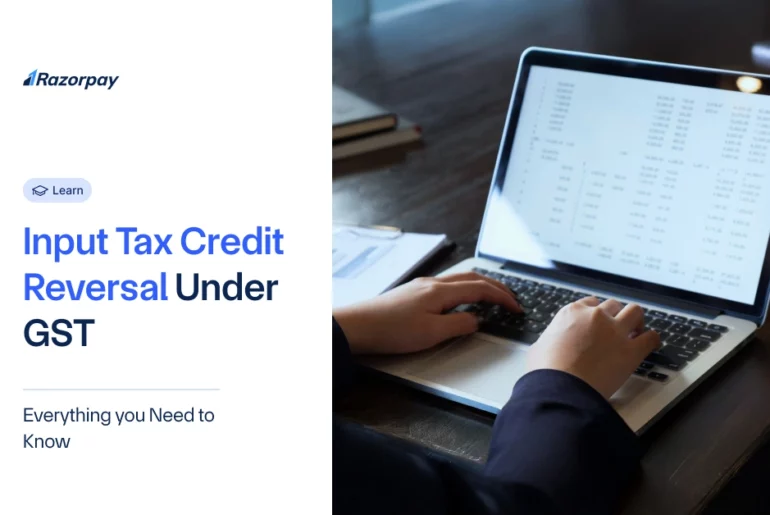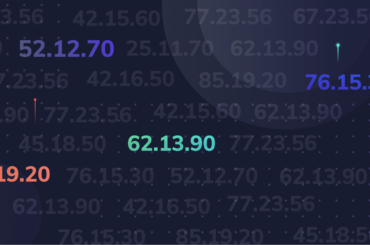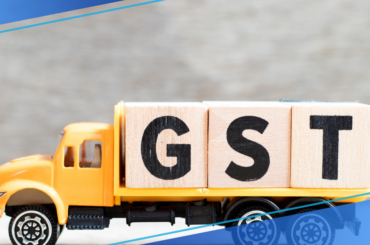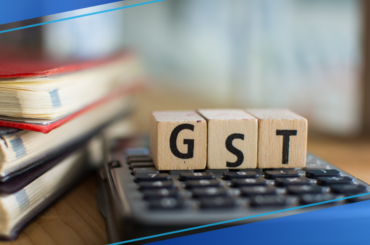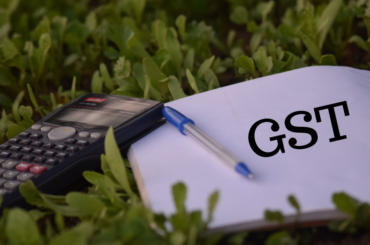Input Tax Credit (ITC) is the cornerstone of the Goods and Services Tax (GST) framework. It allows businesses to reduce their tax liability by claiming credit for the GST paid on purchases related to their business activities. However, under certain conditions, this claimed ITC must be reversed, meaning it is added back to the output tax liability. This reversal is crucial to maintaining the integrity of the tax system and ensuring that the benefits of input tax credit under GST are availed correctly and lawfully. Let’s understand what is ITC reversal in detail.
Table of Contents
What Is the Reversal of the Input Tax Credit of GST?
[Source]
The meaning of reversal of ITC in the GST framework refers to the process where businesses are required to negate or pay back the ITC that they previously claimed. This occurs when the conditions under which the ITC was claimed are no longer met.
Some of the common scenarios, when an ITC reversal under GST occurs, are:
-
If the recipient does not pay the supplier within 180 days of the invoice issuance, the ITC for that purchase will be reversed.
-
If inputs or input services are used for personal consumption or non-business activities, the proportionate ITC must be reversed.
-
If the goods or services initially used for taxable supplies become exempt, the ITC claims on those supplies must be reversed.
-
Credits not eligible under GST rules, such as those listed under Section 17(5), must be reversed.
When ITC is reversed, it nullifies the tax credit that was previously claimed. That means the business will have to pay more taxes than it would have if the ITC had not been reversed, and consequently, it will increase the output tax liability of the business.
However, businesses that do not comply with this rule face penalties, interest, and additional tax liabilities. Timely reporting helps businesses maintain accurate tax records and avoid legal repercussions.
What Are the Specific Conditions for ITC Reversal?
[Source]
The reversal of the input tax credit (ITC) under the GST Act is mandated in several specific scenarios. Some specific conditions and their corresponding circumstances that necessitate ITC reversal are:
Rule |
Circumstances |
Reversal Timing |
CGST Rule 37[Source]
|
When the recipient fails to make payment to the supplier for a particular supply (fully or partly).
|
The deadline for this invoice is typically within 180 days from the invoice issue date.
|
CGST Rule 37A[Source]
|
If the supplier fails to make tax payment through GSTR-3B on or before 30th September of the following year.
|
The recipient must reverse the ITC by 30th November following the end of the financial year.
|
CGST Rule 38[Source]
|
50% ITC reversal by banking institutions and other financial entities under special rules.
|
Typically, at the time of submitting regular returns. |
CGST Rule 42[Source]
|
Inputs for exempt supplies or manufacturing, a few of which were utilised for personal purposes. |
The reversal frequency for CGST Rule 42 depends on the specific situation but is generally periodic. |
CGST Rule 43[Source]
|
Capital goods were used for exempt supply or manufacturing, a few of which were utilised for personal purposes. |
The reversal frequency for CGST Rule 43 is typically on a periodic basis using a specified formula. |
CGST Rule 44[Source]
|
It covers various scenarios, such as cancellation of GST registration or switching to a composition scheme. |
The reversal process may involve filing form REG-16 under various situations or using ITC-03 while opting for the composition scheme. |
CGST Rule 44A[Source] |
Reversal of 5/6th of the ITC taken on gold dores in stock as of 1st July 2017. |
Typically, at the time of supply of either the gold dore bar or the gold/gold jewellery.
|
Section 16(3)[Source] |
This section deals with depreciation under the Income Tax Act claimed on the GST component of capital goods purchased.
|
The timing of the reversal depends on the specific circumstances.
|
CGST Section 17(5)[Source] |
Mention ITC for ‘blocked credits’ (e.g., food, motor vehicles, beverages, etc.).
|
Typically, at the time of filing regular returns up to the date of filing annual returns.
|
CGST Section 17(5)(h)[Source] |
Inputs utilised in goods that were destroyed, lost, or stolen. |
The timing for reversal depends on the specific situation. |
Related Read: What are the Cases Where ITC Is Not Applicable?
How Is ITC Reversal Calculated Under Several Rules?
[Source]
Various regulations have been stipulated for determining the amount of ITC to be reversed within the GST framework.
1) Specific Credit
Specific credit refers to ITC directly attributable to a supply, whether taxable, non-taxable, or for personal use. This type of credit must be distinctly identified and segregated from the total ITC amount. The utilisation of specific ITC is to offset the liability on a particular taxable supply, which is reflected in the electronic credit ledger. However, if a specific ITC is wrongly availed for a non-taxable supply or personal consumption, it is mandatory to reverse it.
2) Common Credit
ITC cannot be directly linked to a specific supply but is used for taxable and non-taxable supplies, including personal consumption. Businesses must identify and reverse the proportionate amount of ITC related to non-taxable supplies or personal consumption. The remaining ITC, post-reversal, is eligible to be claimed.
3) Rules 42 and 43
Rule 42 pertains to the reversal of ITC on inputs or input services used for exempt supplies or personal consumption. Here is the formula for computing reversal under this.
D1= (T1×T2)/T3
Where:
-
D1 is the amount of ITC to be reversed.
-
T1 represents the common credit on inputs and services for a tax period.
-
T2 is the total value of exempt supplies made during the tax period.
-
T3 is the total turnover in the State of the registered person during the tax period.
Rule 43 deals with the reversal of input tax credit on capital goods used for exempt supplies or personal consumption. The calculation involves determining the amount of ITC attributable to a tax period on common capital goods and reversing it over the useful life of the goods.
Understanding and complying with these rules is vital for accurate ITC reversal calculations and maintaining GST compliance.
Rule 42: ITC Reversal on Inputs/Input Services With Calculations
[Source]
As said before, this rule pertains to the reversal of ITC related to inputs and input services. It addresses scenarios where these credits are used for both taxable and non-taxable supplies or non-business or personal purposes.
Key steps in the ITC reversal in GST (Rule 42):
Step 1: Segregation of Specific Credits:
-
T: Total input tax credit.
-
T1: Specific credit for non-business use.
-
T2: Specific credit for exempt supplies.
-
T3: Blocked credits under section 17(5).
Step 2: Derivation of Common Credit:
-
C1: ITC credited to the electronic credit ledger.
-
Calculated as: C1 = T – (T1 + T2 + T3).
-
T4: Specific credit for taxable supplies.
-
C2: Common credit left after attribution.
-
Calculated as: C2 = C1 – T4.
Step 3: Computation of ITC Reversal from Common Credit:
-
D1: ITC attributable towards exempt supplies.
-
D2: Deemed ITC for non-business purposes.
-
C3: Remaining eligible ITC.
-
Calculated as: C3 = C2 – (D1 + D2).
Suppose a business has the following values:
-
Total ITC (T): ₹1,00,000
-
Non-business use (T1): ₹10,000
-
Exempt supplies (T2): ₹20,000
-
Blocked credits (T3): ₹5,000
-
ITC credited (C1): ₹65,000
-
Taxable supplies (T4): ₹40,000
Calculations:
C1 = ₹1,00,000 – (₹10,000 + ₹20,000 + ₹5,000) = ₹65,000
C2 = ₹65,000 – ₹40,000 = ₹25,000
Assuming D1 = ₹8,000 and D2 = ₹2,000:
C3 = ₹25,000 – (₹8,000 + ₹2,000) = ₹15,000
The business can claim ₹15,000 as eligible ITC.
Remember, understanding and correctly applying Rule 42 ensures accurate ITC reconciliation and compliance with GST regulations.
Rule 43: ITC Reversal on Capital Goods With Calculations
[Source]
Rule 43 of the GST framework specifically addresses the reversal of ITC related to capital goods. This rule outlines the conditions under which businesses must exclusively reverse ITC on capital goods for taxable and exempt supplies or non-business purposes and ensure a fair allocation of tax credits.
There are two main conditions to claim ITC on capital goods and determine their eligibility under the GST framework:
Category A: Nature of Use:
ITC is eligible if capital goods are used for business or
taxable supplies, including zero-rated supplies, and not for non-business or exempt supplies.
Category B: Proportional Use for Taxable and Zero-Rated Supplies:
If capital goods are used for both taxable and exempt supplies, ITC eligibility is limited to their proportionate use in taxable activities.
Capital goods used solely for non-business purposes or exempt supplies are not eligible for ITC.
When capital goods are used for taxable and exempt supplies, the credit attributed to taxable and zero-rated supplies is recorded in the electronic credit ledger.
For capital goods covered in Category ‘A’ or ‘B’, 5% of the common credit (Tc) is deducted every quarter or part of a quarter. This deduction accounts for the depreciation of capital goods over time. The useful life of capital goods is considered to be five years from the date of the invoice.
Here is how to compute ITC reversal under this:
-
Tm: ITC attributable to a month (monthly filing).
-
Calculated by dividing the credit by 60, (Tc/60).
-
Tr: Aggregate value of exempt supplies during the tax period.
-
Te: Common credit attributable towards exempted supplies.
-
Calculated as: Te = (Tm × Tr) / F
Where F is the total turnover in the state of the registered person during the tax period.
Suppose capital goods have an ITC of ₹1,20,000. The business has ₹20,000 worth of exempt supplies and a total turnover of ₹10,00,000.
Calculations:
-
Tm = ₹1,20,000 / 60 = ₹2,000
-
Te = (₹2,000 × ₹20,000) / ₹10,00,000 = ₹40 (to be reversed monthly)
Initially, ₹1,20,000 is credited to the ledger, and ₹40 is reversed each month based on the exempt percentage use over the capital good’s useful life.
Rule 44:
[Source]
Rule 44 comes into play when a registered person either cancels their GST registration or opts for the composition scheme. The primary aim of Rule 44 is to ensure that all availed ITC is reversed when a registered person’s tax scheme or registration status changes.
The process of input tax credit reversal here involves two essential calculation methods:
-
The reversal of input tax credit under GST is proportional and based on the corresponding invoices for inputs held in stock or contained in semi-finished and finished goods. This ensures that the ITC is accurately reversed for inputs still in stock or part of the work-in-progress or finished goods.
-
For capital goods, the reversal is done pro-rata, considering the assets’ remaining useful life. This method considers the extent to which the capital goods have been used for business purposes and reverses the ITC accordingly.
Rule 44A: Reversal of Transitional ITC for Gold Dore Bars on July 1, 2017
[Source]
Rule 44A is intrinsically linked to the CENVAT credit available under the previous taxation scheme. This rule was introduced to provide a method for reversing the ITC that businesses had claimed on the additional duty of customs to import gold dore bars under the pre-GST regime.
The additional customs duty levied at the time of importation of gold dore bars was equivalent to the excise duty and was eligible for credit under the CENVAT scheme. The credit was meant to offset the duties paid during the importation process, making it a crucial aspect of the cost calculation for businesses dealing with gold dore bars.
With the implementation of GST on July 1, 2017, Rule 44A restricts the ITC for taxpayers with a stock of gold dore bars or gold jewellery as of the GST implementation date. It limits the ITC to 1/6th of the initially availed credit on such stock. This means that the taxpayer can retain only a fraction of the credit claimed earlier.
The rule mandates that 5/6th of the initially claimed credit must be reversed at the time of supply of the gold dore bars or the gold/gold jewellery derived from them. This reversal ensures that the benefits of the earlier scheme do not carry over indefinitely under the new tax regime.
Reporting of ITC Reversal in GSTR-3B
[Source]
The ITC reversal amount is reported in Table 4B of the GSTR-3B form, which is divided into two categories:
1) As per Rules 42 & 43
Under this, the ITC reversal pertains to the input tax credit attributable to exempt or non-business supplies. The calculation is manual and follows a specific formula that considers the total input tax on inputs and input services in a tax period, denoted as “T,” and segregates it based on its usage for business, exempt supplies, or non-business purposes.
The calculated amount under this category must be entered in Table 4B, specifically under the ‘As per Rule 42 & 43’ heading.
2) Others
The ‘Others’ category includes ITC reversals that do not fall under the Rule 42 and 43 criteria. These could be because of various other circumstances, such as the supplier not paying consideration within 180 days, the vendor not paying tax, or any other reason not covered by the rules above.
To report such reversals, the taxpayer must manually enter the details in Table 4B under the ‘Others’ category. It’s important to note that while some reversals are permanent, others may be temporary and can be reclaimed in the future under certain conditions.
Reporting of ITC Reversal in GSTR-9
[Source]
GSTR-9 is an annual return form consolidating the monthly returns filed in GSTR-3B. It includes auto-populated details based on the data entered in these monthly returns. Among the various pieces of information, it covers details related to ITC reversal.
Taxpayers should note that while GSTR-9 does provide auto-populated data, they retain the flexibility to make manual adjustments. This is particularly important for ensuring that the ITC reversal reflects the actual figures for the entire financial year. If discrepancies are found between the recorded data and the figures, taxpayers are instructed to make the necessary changes in GSTR-9 to report the ITC reversal accurately.
The details concerning ITC reversal are captured explicitly in Table 7 of GSTR-9. This table is crucial as it guides taxpayers in providing relevant information for the entire year, ensuring completeness and accuracy. It is important to review this table carefully and ensure that all ITC reversals, whether because of non-payment within 180 days, excess claims, or any other reason, are reported correctly.
Related Read: Capital Goods in GST: Key Facts You Should Know
Conclusion
The reversal of ITC under GST is critical to maintaining tax integrity and ensuring compliance. Businesses must understand when and how to reverse ITC to avoid penalties and additional tax liabilities. Various rules and conditions dictate the reversal process, covering scenarios such as non-payment, non-business use, and changes in tax schemes. Proper calculation and reporting of ITC reversal in GST returns are essential for accurate tax records and regulation compliance.
Frequently Asked Questions (FAQs)
1. What is the reversal of ITC in GSTR 9?
The reversal of ITC in GSTR-9 refers to nullifying the Input Tax Credit that was previously claimed but needed to be reversed due to reasons like non-payment to the supplier or excess claims.
2. How much interest is paid on the reversal of ITC?
Interest on the reversal of ITC is charged at 18% per annum, computed from the date of availing the ITC until the date it is reversed.
3. What is the last date for ITC reversal?
The last date for ITC reversal is typically the 30th of November following the end of the financial year to which the debit note or invoice pertains or the date of filing the annual return, whichever is earlier.
4. What is the temporary reversal of ITC under GST?
Temporary reversal of ITC under GST occurs when ITC is reversed due to conditions like non-payment within 180 days but can be reclaimed upon fulfilling the necessary conditions later.

